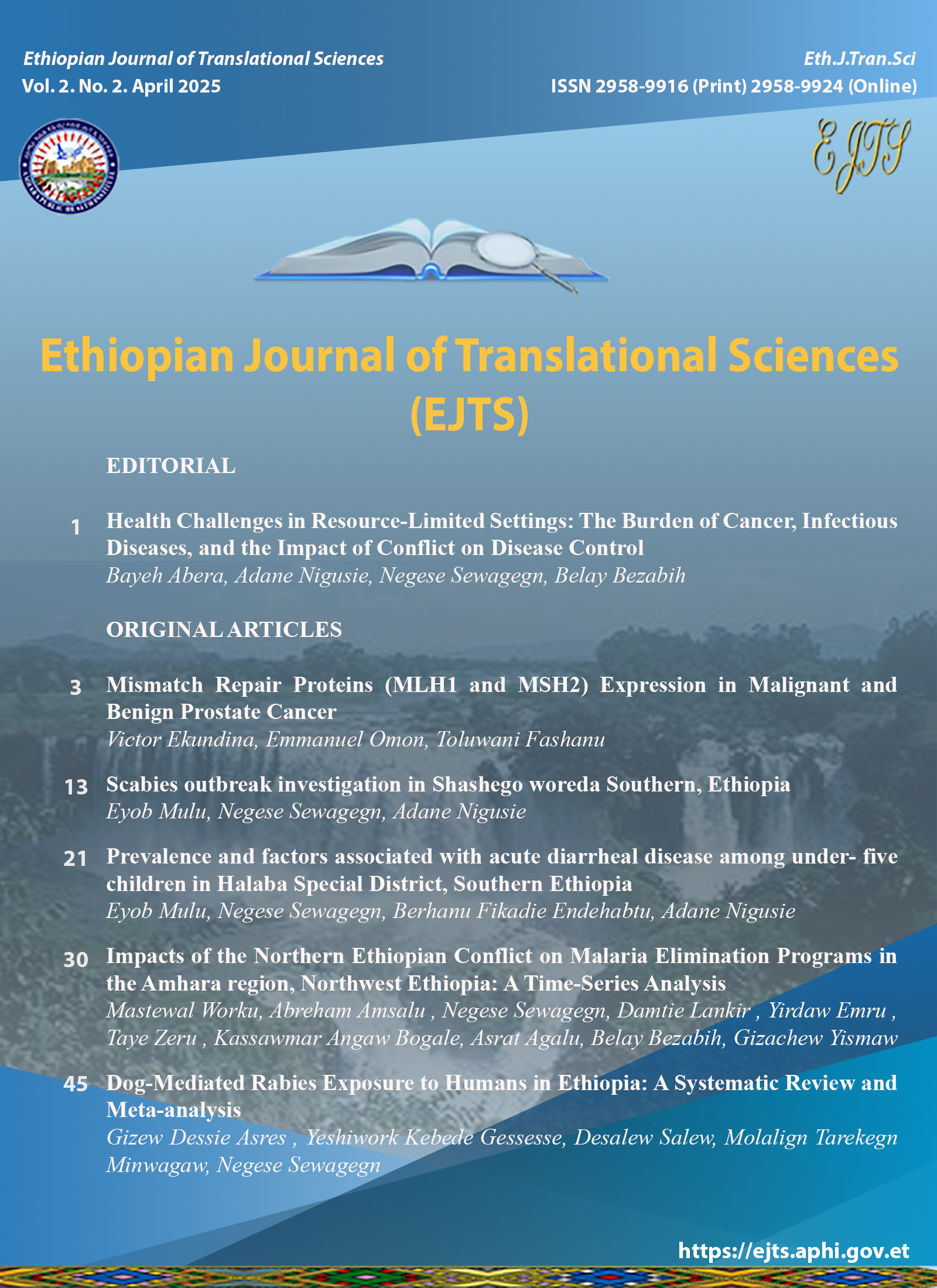Scabies outbreak investigation in Shashego woreda Southern, Ethiopia
Keywords:
outbreaks, risk factors, scabies, Shashego district, EthiopiaAbstract
Background: Scabies is a contagious ectoparasite of the skin caused by the microscopic mite Sarcoptic scabies var. hominis. It is usually spread by direct and prolonged skin-to-skin contact with someone with scabies. Schools, refugee camps, and prisons are often sources of scabies outbreaks in developing countries, with the major aggravating factors being environmental (warm weather and climate change)
Objectives: To investigate and manage the outbreak, and ultimately offer recommendations for preventive measures in the Shashego district of the Hadiya zone, Southern Ethiopia, in 2018. Methods: An unmatched community-based case-control (1:2 or 47 cases and 94 controls) nonprobability purposive sampling investigation was conducted, using predesigned questionnaires.
Results: One thousand forty-one scabies cases were reported from August to November 2018; there were no death reports. A case-control study was conducted, there were 47 scabies cases (21 males and 19 females) with a mean and median age of cases were 16 and 12 years, respectively, ranging (from 1 to 50 years) and 94 community controls (37 males and 43 females) with a mean and median age were 20.6 and 17.5 years (ranging 2-50 years). Male accounts 623(56.33%). A high attack rate of 1.69% was observed among children aged 0- 7 years. Multivariate analysis shows that infrequent use of soaps [(AOR) =15.246, 95%CI (1.901-122.268)], changing clothes once a month [(AOR)=20.668,95%CI (2.406-177.548)], washing clothes once a month [(AOR) = 66.876,95%CI (6.107-732.314)], sharing cloths with scabies case of last two month [(AOR) = 11.864,95% CI (1.664-84.562)], and prolonged direct skin to skin contact [(AOR)=54.193, CI (1.082-2714.433) were independent risk factors for scabies outbreaks.
Conclusion: The scabies outbreak occurred in the Shashego district, mainly in children 0-7 years old. Infrequent use of soaps, washing clothes once a month, changing clothes once a month, sharing clothes in families, and prolonged direct skin-to-skin contact were significant risk factors for scabies outbreaks. We recommended increasing strong active case detection and providing mass treatments. We also recommended using mass media worldwide at schools, markets, and religious places to raise awareness.
Published
How to Cite
Issue
Section
License
Copyright (c) 2025 Ethiopian Journal of Translational Sciences

This work is licensed under a Creative Commons Attribution-NonCommercial-ShareAlike 4.0 International License.




